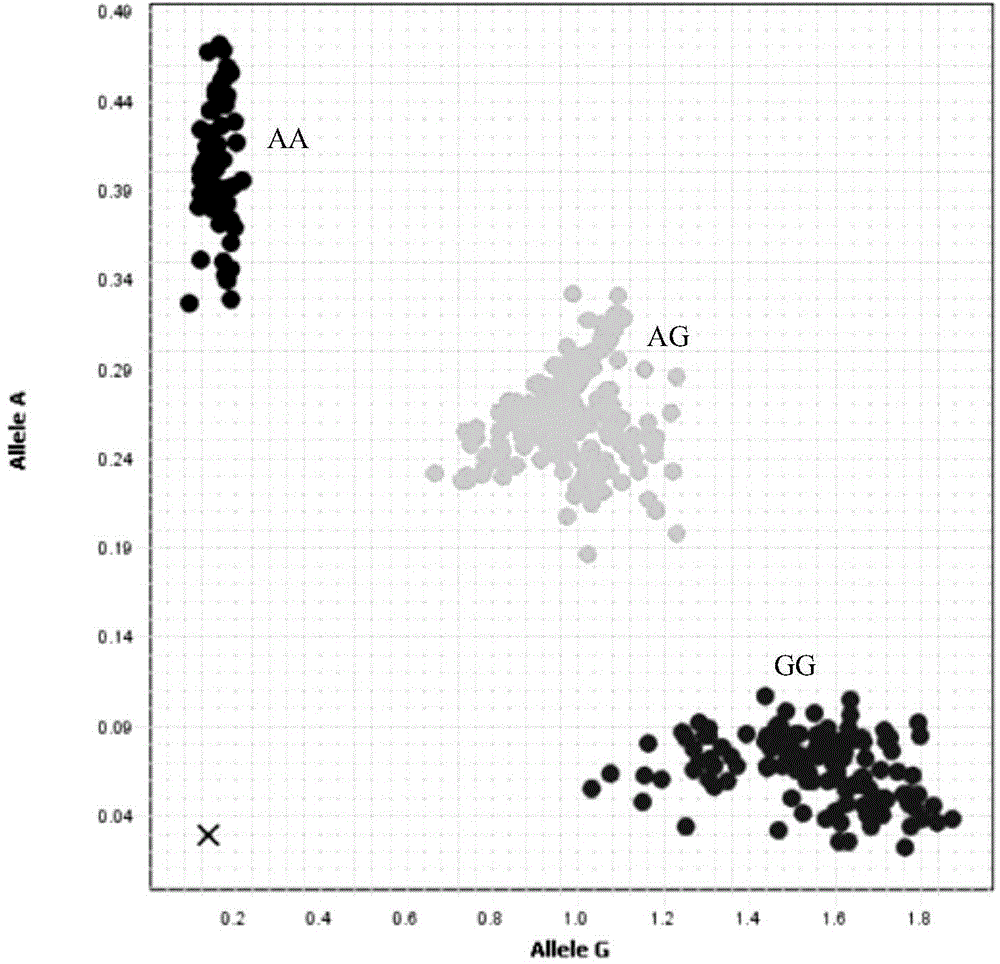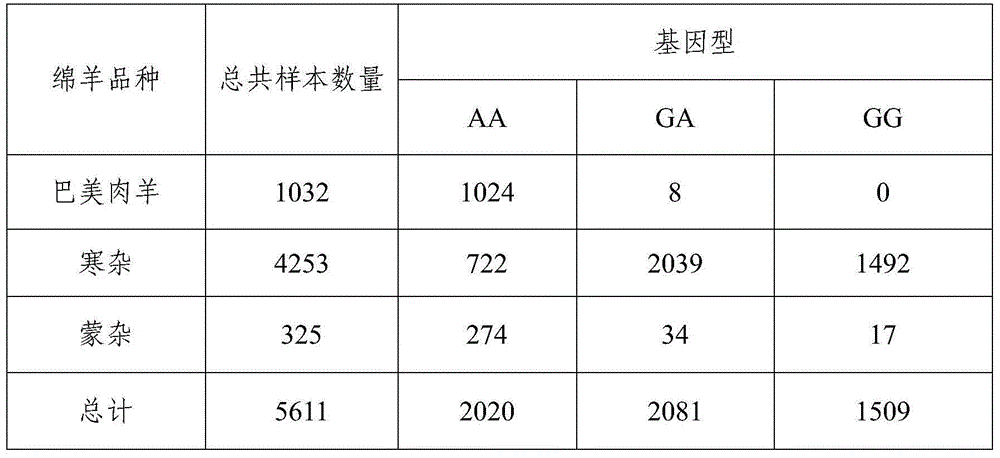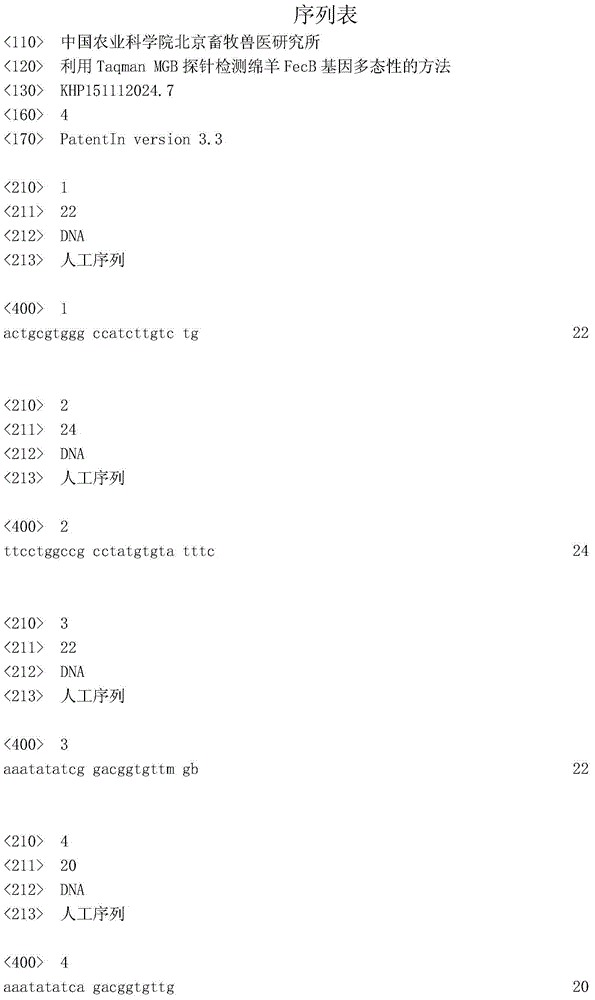Method for detecting sheep FecB gene polymorphism through Taqman MGB probe
A sheep and probe technology, used in biochemical equipment and methods, microbial determination/inspection, etc., can solve the problems of difficult high-throughput automated measurement, low throughput, and many procedures, and achieve easy and specific interpretation of results. Strong, easy to read effect
- Summary
- Abstract
- Description
- Claims
- Application Information
AI Technical Summary
Problems solved by technology
Method used
Image
Examples
Embodiment 1
[0031] Embodiment 1 Utilizes the method for Taqman MGB probe detection sheep FecB gene polymorphism
[0032] 1. Experimental materials
[0033] A total of 5611 ewes and rams produced by crossbreeding Bamei mutton sheep and Small-tailed Han sheep as the female parent and other breeds as the male parent were selected as the test objects.
[0034] 2. Genomic DNA extraction
[0035] 1ml of blood was collected from the jugular vein of the sheep and treated with EDTA anticoagulant. First, the red blood cell lysate is lysed to remove DNA-free red blood cells. The nucleus lysate lyses the cells to release genomic DNA. Then the protein precipitation solution selectively precipitates to remove the protein. Finally, the purified genomic DNA is precipitated by isopropanol and redissolved in the DNA lysate.
[0036] 3. Genotyping by Taqman MGB probe method
[0037] Primers and probes were designed for the 29382188bp site on sheep chromosome 6 (NC_019463.1, based on the sheep genome sequ...
PUM
 Login to View More
Login to View More Abstract
Description
Claims
Application Information
 Login to View More
Login to View More - R&D
- Intellectual Property
- Life Sciences
- Materials
- Tech Scout
- Unparalleled Data Quality
- Higher Quality Content
- 60% Fewer Hallucinations
Browse by: Latest US Patents, China's latest patents, Technical Efficacy Thesaurus, Application Domain, Technology Topic, Popular Technical Reports.
© 2025 PatSnap. All rights reserved.Legal|Privacy policy|Modern Slavery Act Transparency Statement|Sitemap|About US| Contact US: help@patsnap.com



